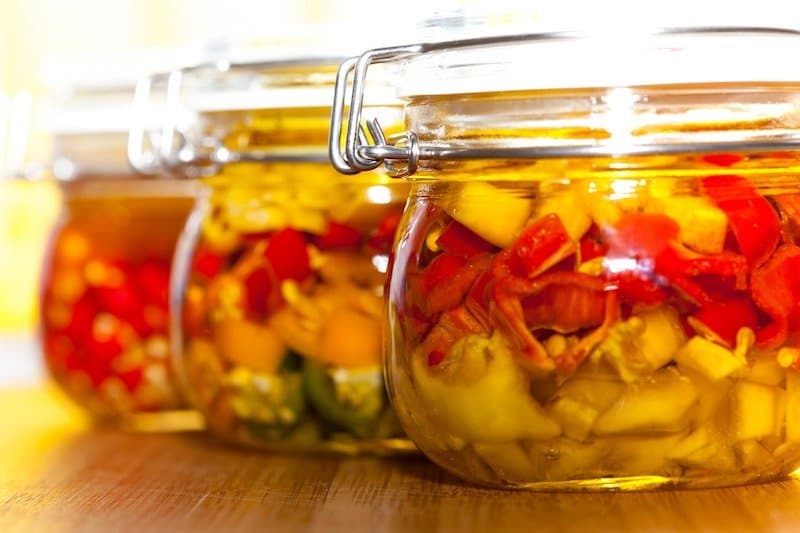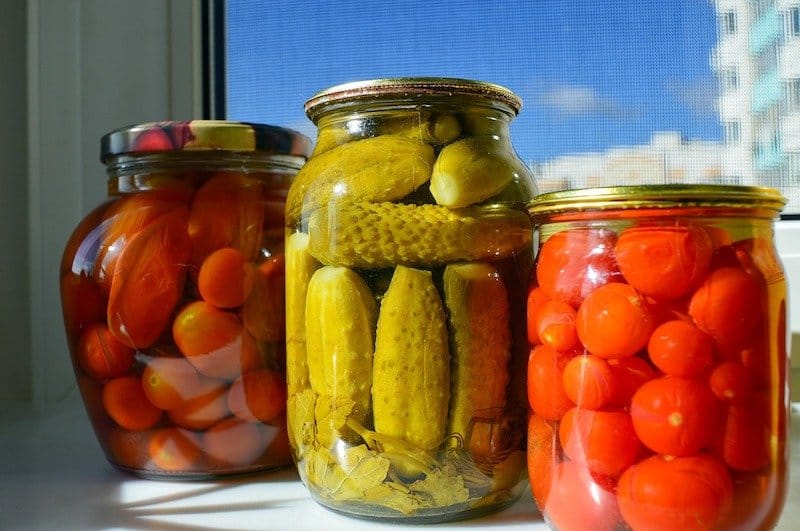What Happens When You Ferment Vegetables?
Fermentation is a timeless way to prepare and preserve foods. For people from foodies to chefs to budget-conscious families, fermentation is exploding in popularity.
Fermentation gives vegetables a unique, tangy, savory flavor and cultivates healthy bacteria for our bodies. So, what happens when you ferment vegetables, exactly? Here’s everything you need to know.
How Vegetable Fermentation Works
Fresh vegetables (cabbage, peppers, carrots, garlic, etc.) are naturally covered in microorganisms like bacteria and yeast. Some of these microorganisms contribute to food spoilage and will quickly make fresh vegetables go bad. There are a large number of microorganisms on vegetables that contribute to food spoilage.
However, some of the yeasts and bacteria on vegetables are helpful for fermentation instead of spoilage. When you add salt or brine, control the amount of oxygen, and create a beneficial environment, the fermentation organisms can grow faster and start to outnumber the “bad” organisms that can spoil food.
As fermentation progresses, these beneficial organisms break down the natural sugars in vegetables, creating flavor compounds, carbon dioxide gas, and various acids. The organisms that cause spoilage can’t live in this acidic environment, so they die and leave only the “good” organisms that conduct fermentation.
So, fermenting is a great way to preserve vegetables and make them last longer. It transforms the flavor and texture of vegetables, creating unique and famous foods like sauerkraut, kimchi, and even hot sauce. Fermented vegetables are also full of probiotic organisms that improve our own digestion and have a wide range of health benefits.
Vegetable Fermentation FAQs
Can You Ferment Vegetables Too Long?
If you have correctly fermented your vegetables and they’re in a beneficial environment, then they cannot ferment for too long. Fermentation is one of the best ways to preserve foods without refrigeration, and properly fermented foods last almost indefinitely. The longer your vegetables ferment, the more flavor develops, so you can stop the fermentation process when they have reached the taste you prefer. The easiest thing you can do to stop fermentation without changing the flavor or texture is to put your fermented vegetables in the fridge. Other factors that stop fermentation are vinegar (by using mostly vinegar, then you’re pickling instead of fermenting) and also cooking the vegetables.
What is the Ideal Temperature for Fermenting Vegetables?
Fermentation organisms work more quickly in warm weather and more slowly in low temperatures. However, environments that are too hot or too cold can potentially damage the bacteria you are trying to cultivate. The ideal temperature for fermentation is 65-72°F. If your temperatures are a few degrees cooler, fermentation will happen more slowly, and if your temperatures are warmer, it will happen more quickly. If necessary, you can control the temperature by fermenting in a cool cellar or an insulated cooler or use a warming device like a seedling mat to increase the temperature.
How Do I Know When My Fermented Vegetables are Ready?
There are three signs that your fermented vegetables are progressing nicely and are ready to enjoy.
- Look for small bubbles in your container. As your food ferments, the organisms create carbon dioxide, which looks like bubbles or foam in the liquid. Bubbles should appear within the first day or two of fermentation, and they are a sign that fermentation is progressing correctly but do not mean that your vegetables are done.
- After 3-5 days, smell your fermented vegetables. They should have a sharp, sour, pungent smell but should not smell spoiled or rotten. Expect a cheesy or vinegary smell, depending on your vegetables, but beware of a moldy or foul odor.
- When your fermented vegetables smell “right” to you, go ahead and taste. Depending on your preferences, you may want to let them ferment longer for more flavor development or stop them earlier when you most enjoy them.
Always be alert for the warning signs that your vegetables are spoiling instead of fermenting. The most common sign is mold on top of your vegetables, but not all mold is “bad.” Here’s what to watch for:
- Cloudy water is expected during the fermentation process and not something to be concerned about. As long as bubbles form and the vegetables don’t have an unpleasant smell, it’s just part of the process.
- During fermentation, a filmy grey “skin” may form over the top of your liquid. This type of mold does not contaminate the fermenting liquid or your food – you can simply skim it off when fermentation is complete and enjoy your vegetables. If you see distinct patches of dense, fuzzy, colorful mold, discard your fermenting vegetables and start over. You can prevent mold by always using sterile materials during fermentation, washing and drying your vegetables thoroughly, and always ensuring that your vegetables are completely submerged in the liquid, with no part of them reaching the air.
- If your fermenting vegetables smell rotten or have gotten mushy, they should be discarded. Don’t eat anything that smells spoiled. If necessary, purchase kimchi, kombucha, or sauerkraut at the store to familiarize yourself with how correctly fermented vegetables should smell.
Can You Ferment Vegetables Without Salt?
Salt helps fermentation by slowing down spoilage and enzymatic activity that causes decay, giving your beneficial fermenting bacteria more time to grow. It also helps to preserve foods for longer. However, you can easily ferment foods without adding any salt. You can ferment at a lower temperature, which also slows enzymes that cause decay and helps the fermentation process. Adding a starter culture like whey or the liquid from a previous batch of fermented vegetables will also promote fermentation without adding salt. Lastly, you can ferment vegetables naturally high in sodium, like kelp, dulse, or certain vegetable greens.
What do Fermented Vegetables Taste Like?
Fermented vegetables can taste very different from each other, depending on the vegetable and the fermentation recipe. Two different batches of the same fermentation recipe can taste very different from each other because fermentation is a natural process and somewhat unpredictable. Chances are good that you’ve already tasted fermented vegetables, whether you have enjoyed foods with miso or gochujang, had a hot dog with sauerkraut, or tasted kimchi, tempeh, or even Tabasco sauce.
In Summary
Fermenting creates delicious foods and ingredients, but it’s also a fun and affordable hobby. Most people discover that once they start fermenting, they simply can’t stop. It opens a whole new world of flavors and health benefits and couldn’t be easier. Enjoy fermenting your own vegetables today.








